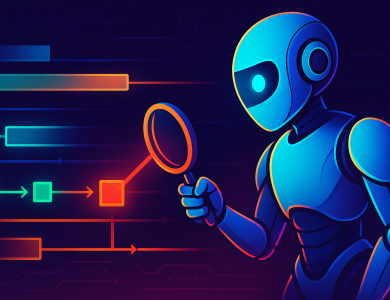
Adopting AI in enterprise project management can seem daunting, but with the right approach, it can revolutionize how your projects are planned and executed. In this guide, we’ll walk you through each step of integrating AI into your project management processes, addressing common concerns and showcasing real-life examples to make the journey smoother.
Understanding the Importance of AI in Project Management
Every project manager has faced challenges like missed deadlines, budget overruns, or resource misallocations. AI offers solutions by providing predictive analytics, automating routine tasks, and enhancing decision-making processes. For instance, ProjectNext.ai leverages AI to streamline project workflows, ensuring teams stay on track and within budget.
Step 1: Assessing Your Current Project Management Processes
Before diving into AI adoption, it’s crucial to understand your existing workflows. Identify bottlenecks, repetitive tasks, and areas where data-driven insights could make a difference. Conducting a comprehensive audit helps in pinpointing where AI can add the most value.
Real-Life Example:
Company XYZ struggled with resource allocation across multiple projects. By assessing their processes, they identified that manual tracking was leading to inefficiencies. Implementing an AI-driven tool from ProjectNext.ai automated this tracking, resulting in a 20% increase in productivity.
Step 2: Defining Clear Objectives for AI Integration
Set specific, measurable goals for what you want to achieve with AI. Whether it’s improving project timelines, enhancing communication, or optimizing resource usage, clear objectives will guide your AI adoption strategy and help in measuring its success.
Step 3: Selecting the Right AI Tools and Technologies
Not all AI tools are created equal. Choose solutions that align with your objectives and integrate seamlessly with your existing systems. Look for features like predictive analytics, natural language processing, and machine learning capabilities.
Why ProjectNext.ai?
ProjectNext.ai offers a comprehensive suite of AI-powered tools designed specifically for enterprise project management. Their platform provides real-time insights, automates repetitive tasks, and enhances collaboration across teams.
Step 4: Training and Upskilling Your Team
AI adoption requires your team to understand and effectively use new tools. Invest in training programs to ensure everyone is comfortable with the technology. This not only boosts productivity but also fosters a culture of innovation.
Success Story:
After implementing AI tools from ProjectNext.ai, Company ABC conducted training sessions that led to a 30% improvement in project delivery times as teams became proficient in using the new technologies.
Step 5: Integrating AI into Your Project Management Workflow
Start by integrating AI into specific aspects of your workflow, such as scheduling, risk management, or reporting. Gradually expand its use as your team becomes more comfortable and as you identify additional areas where AI can add value.
Step 6: Monitoring and Evaluating AI Performance
Regularly assess the performance of your AI tools against the objectives you set earlier. Use key performance indicators (KPIs) to measure improvements and identify areas for further optimization.
Step 7: Scaling AI Adoption Across the Organization
Once you’ve successfully integrated AI into your project management processes, consider scaling its use across other departments. This holistic approach ensures that the benefits of AI are maximized throughout your enterprise.
Common Challenges and How to Overcome Them
AI adoption isn’t without its hurdles. Common challenges include resistance to change, data privacy concerns, and the initial investment costs. Address these by fostering an open culture, ensuring robust data security measures, and demonstrating the long-term ROI of AI tools.
Overcoming Resistance:
Engage your team early in the process, highlighting the benefits of AI and providing ample training. Showing tangible improvements can help mitigate resistance.
Frequently Asked Questions (FAQ)
1. How long does it take to implement AI in project management?
The timeline varies based on the complexity of your projects and the readiness of your team. On average, it can take anywhere from three to six months to fully integrate AI tools.
2. What are the costs associated with AI adoption?
Costs can include software subscriptions, training programs, and potential infrastructure upgrades. However, the ROI from increased efficiency and productivity often outweighs the initial investment.
3. Can AI replace human project managers?
AI is designed to augment, not replace, human project managers. It handles repetitive tasks and provides data-driven insights, allowing managers to focus on strategic decision-making and team leadership.
4. How do I choose the right AI tool for my organization?
Assess your specific needs, set clear objectives, and evaluate tools based on features, scalability, and integration capabilities. Consulting with experts or platforms like ProjectNext.ai can also help in making an informed decision.
Conclusion
Adopting AI in enterprise project management is a transformative step that can lead to enhanced efficiency, better decision-making, and improved project outcomes. By following this step-by-step guide, you can navigate the complexities of AI integration and harness its full potential to drive your projects to success.



